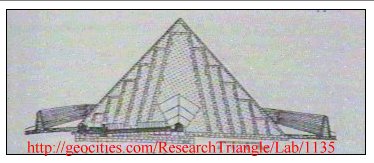

The pyramids built to last an eternity and after 4000 years still looking good.
A different story for Sydney Australian Opera house however only thirty years old and now beginning to show it age and is apparent to even the causal observation it not going to last as long as the pyramids.
From a report present on Australian national TV Science program there appears to be a theory that the pyramids and other ancient wonders were constructed of concrete of unusual durability.
Some say this formula died with the ancients
It seems a team from the Australian Melbourne University may have cracked the secret and created a modern version of this building material called geo polymers.
The team that includes Professor Johan van Jaarsved and Professor Jannie Van Deventer. have found that
The geo polymers have some interesting properties of being uncommonly tough and it can be made from a wide range of Industrial waste products.
It seems most Industrial waste contains very large amounts of silicon and aluminium and the reactive properties of each is what is used to create the geo polymers.
Around each coal power stations there is usually dump where fly ash is stored and there is a great need to find a use for these large dump heaps has become a high priority.
World industries also produce millions of tons of solid waste
Geo polymers it seems could be a way to turn this waste material into a useful
substance for construction.
Those reading this page may wonder how simple it is to make a geo polymer.
The formula is very simple.
Take a scoop of Power station ash
Add some steel slag
Add some caustic soda
Then a bit of waste
Then mix it well and
Then place in a moderate heated oven and wait ten minutes
And then you will have a quick setting Geo Polymer.
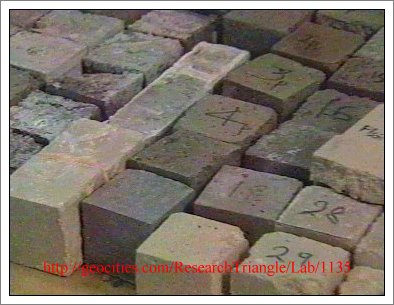
If you have the above requirements you can also add anything from paper pulp to polyurethane even heavy metals like Mercury and cadmium it seems.
They can be cast into any shape and the flat block shown has some amazing properties.
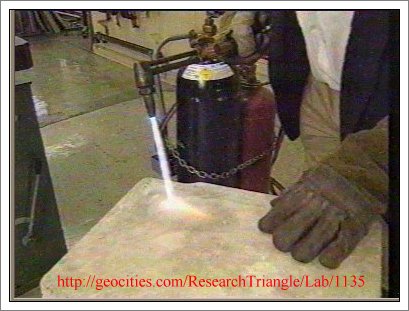
This block has embedded in it paper and polystyrene thus meaning it has some normally combustible materials in it, but even when subjected to a blow torch of 2000 degree it will only burn for a moment. And from underneath the block will remain cold to the touch even when still under the influence of the blowtorch.
Try doing this with a normal piece of concrete with same 2000 and it will explode.

The professors also have place a geo polymer blocks in Hydrochloric acid for 3 months and as shown in the photo only a small change is so far resulted.
Whilst the same test with normal concrete resulted in a nearly a completely dissolved sludge.
Previously a French research chemist put forward a theory that ancient Egyptians made geo polymers fro the rich aluminium Nile slit.
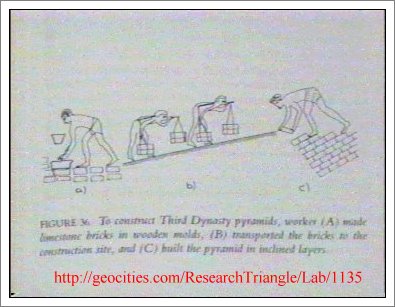
He also suggested the biggest blocks were made from geo polymers, which were cast, on site.
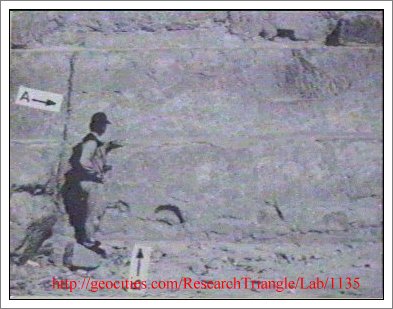
His book was called The Pyramids an enigma solved.
This method would certainly explain how the pyramids could have been built so quickly.
To see how geo polymers are constructed an electron microscope was required and showed to the researcher an unique micro structure of short interlocking chains of atoms strong enough to bind most waste materials
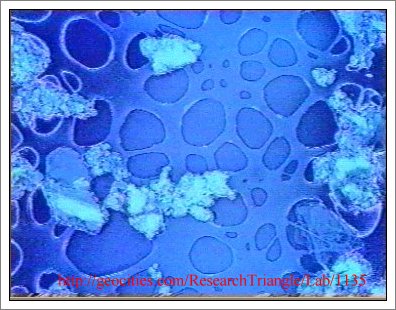
The professors explained it in terms of a chocolate chip cookie with chocolate chips with bits of un reactive particle in a dough of geo polymer paste and this whole thing sets harder than concrete.
Potential uses today seem to be where normal concrete is unsuitable such as in high concentrated acids storage areas and areas that need to fire retarded or fire proof.
This new material should not see to be in competition with concrete but to be used to compliment each other.
At the present time there seems to be no shortage of waste material that could be utilised better in making Geo Polymers.
And just think the ancient Egyptians may have done the same thing but I doubt they had power stations to create the materials required. What else did they know?
This article written after seeing the program item called Paroahs Concrete A report from Quantum by Geoffrey Burchfield first aired to my Knowledge on Thursday the third of September 98 on ABC TV Australia Quantum ABC TV science websiteThis show has been replace by a new science show called Catalyst. It is unknown if John Jaarsved can be reached at the following address but its only one we know of at this stage.
For further Information.
John van Jaarsved & professor Jannie van Deventer
Department of Chemical Engineering
University of Melbourne
Parkville Vic 3052
John van Jaarsved